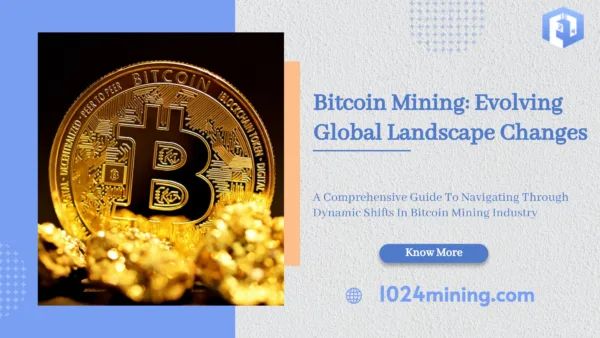Bitcoin mining has come a long way since its inception in 2009. As the popularity and value of Bitcoin have grown, so has the complexity and competitiveness of the mining process. In this blog post, we will explore the evolving global landscape of Bitcoin mining and how it has changed over the years. From the early days of mining on personal computers to the rise of specialized mining hardware and the emergence of mining farms, we will delve into the key developments that have shaped the industry. Join us as we uncover the fascinating journey of Bitcoin mining and its impact on the global economy.
The Early Days of Bitcoin Mining
Mining on Personal Computers
- Limited processing power and low competition
- Easy to mine blocks and earn rewards
- Early adopters had a significant advantage
GPU Mining
- Introduction of graphics processing units (GPUs)
- Increased mining efficiency and profitability
- GPU farms started to emerge
The Rise of ASIC Mining
Introduction of Application-Specific Integrated Circuits (ASICs)
- Custom-built hardware designed specifically for mining
- Dramatic increase in mining power and efficiency
- GPU mining became less profitable
Centralization of Mining Power
- ASICs favored large-scale mining operations
- Small miners struggled to compete
- Concerns about centralization and control
The Emergence of Mining Farms
Industrial-Scale Mining Operations
- Massive mining facilities with thousands of ASICs
- Economies of scale and cost efficiency
- Concentration of mining power in certain regions
Impact on Energy Consumption
- Growing energy consumption of mining farms
- Environmental concerns and sustainability issues
- Search for renewable energy sources for mining
The Global Distribution of Mining Power
China’s Dominance in Bitcoin Mining
- Abundance of cheap electricity and hardware manufacturing
- Large mining farms concentrated in China
- Government regulations and crackdowns
Shifts in Mining Power
- Rise of mining operations in other countries
- North America, Europe, and Central Asia as emerging mining hubs
- Potential impact on the global distribution of wealth
The landscape of Bitcoin mining has undergone significant changes over the years, driven by advancements in technology, increasing competition, and evolving global dynamics. From the early days of mining on personal computers to the rise of specialized ASICs and the emergence of mining farms, the industry has transformed into a highly competitive and centralized space. As the global distribution of mining power continues to shift, it will be interesting to see how these changes impact the future of Bitcoin and the global economy.
As the demand for Bitcoin increases, it is expected that there will be further evolution of the Bitcoin mining industry. This evolution will likely involve the development of more efficient mining hardware, more sophisticated mining operations, and a more diversified global mining landscape. Companies, organizations, and governments around the world will likely play a role in this process, adapting to the changing needs of the mining industry and the global economy. It is also likely that international regulations and laws will become increasingly important in the Bitcoin mining process, as governments seek to protect their citizens and ensure the integrity of the global economy. Ultimately, the future of Bitcoin mining is very much in flux, and it is certain that the global landscape will continue to change in the years ahead.



